Seasonal oscillation of liver-derived hibernation protein complex in the central nervous system of non-hibernating mammals
- PMID: 25079892
- PMCID: PMC4117459
- DOI: 10.1242/jeb.095976
Seasonal oscillation of liver-derived hibernation protein complex in the central nervous system of non-hibernating mammals
Abstract
Mammalian hibernation elicits profound changes in whole-body physiology. The liver-derived hibernation protein (HP) complex, consisting of HP-20, HP-25 and HP-27, was shown to oscillate circannually, and this oscillation in the central nervous system (CNS) was suggested to play a role in hibernation. The HP complex has been found in hibernating chipmunks but not in related non-hibernating tree squirrels, leading to the suggestion that hibernation-specific genes may underlie the origin of hibernation. Here, we show that non-hibernating mammals express and regulate the conserved homologous HP complex in a seasonal manner, independent of hibernation. Comparative analyses of cow and chipmunk HPs revealed extensive biochemical and structural conservations. These include liver-specific expression, assembly of distinct heteromeric complexes that circulate in the blood and cerebrospinal fluid, and the striking seasonal oscillation of the HP levels in the blood and CNS. Central administration of recombinant HPs affected food intake in mice, without altering body temperature, physical activity levels or energy expenditure. Our results demonstrate that HP complex is not unique to the hibernators and suggest that the HP-regulated liver-brain circuit may couple seasonal changes in the environment to alterations in physiology.
Keywords: CTRP; Cerebrospinal fluids; Hibernation; Metabolism; Plasma proteins.
© 2014. Published by The Company of Biologists Ltd.
Figures
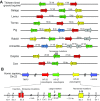
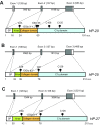
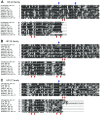


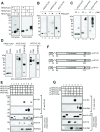
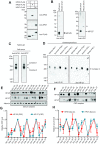
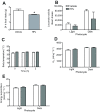
 (D) and energy expenditure (E). *P<0.05 (between vehicle and recombinant HPs).
(D) and energy expenditure (E). *P<0.05 (between vehicle and recombinant HPs).Similar articles
-
HNF-4 participates in the hibernation-associated transcriptional regulation of the chipmunk hibernation-related protein gene.Sci Rep. 2017 Mar 10;7:44279. doi: 10.1038/srep44279. Sci Rep. 2017. PMID: 28281641 Free PMC article.
-
Circannual control of hibernation by HP complex in the brain.Cell. 2006 Apr 7;125(1):161-72. doi: 10.1016/j.cell.2006.03.017. Cell. 2006. PMID: 16615897
-
Hibernation-associated gene regulation of plasma proteins with a collagen-like domain in mammalian hibernators.Mol Cell Biol. 1993 Mar;13(3):1516-21. doi: 10.1128/mcb.13.3.1516-1521.1993. Mol Cell Biol. 1993. PMID: 8441393 Free PMC article.
-
Endogenous circannual clock and HP complex in a hibernation control system.Cold Spring Harb Symp Quant Biol. 2007;72:607-13. doi: 10.1101/sqb.2007.72.028. Cold Spring Harb Symp Quant Biol. 2007. PMID: 18419320 Review.
-
Annual lipid cycles in hibernators: integration of physiology and behavior.Annu Rev Nutr. 2005;25:469-97. doi: 10.1146/annurev.nutr.25.050304.092514. Annu Rev Nutr. 2005. PMID: 16011475 Review.
Cited by
-
Disrupted seasonal biology impacts health, food security and ecosystems.Proc Biol Sci. 2015 Oct 22;282(1817):20151453. doi: 10.1098/rspb.2015.1453. Proc Biol Sci. 2015. PMID: 26468242 Free PMC article. Review.
-
HNF-4 participates in the hibernation-associated transcriptional regulation of the chipmunk hibernation-related protein gene.Sci Rep. 2017 Mar 10;7:44279. doi: 10.1038/srep44279. Sci Rep. 2017. PMID: 28281641 Free PMC article.
-
c-fos induction in the choroid plexus, tanycytes and pars tuberalis is an early indicator of spontaneous arousal from torpor in a deep hibernator.J Exp Biol. 2024 May 15;227(10):jeb247224. doi: 10.1242/jeb.247224. Epub 2024 May 23. J Exp Biol. 2024. PMID: 38690647 Free PMC article.
References
-
- Andrews M. T. (2007). Advances in molecular biology of hibernation in mammals. Bioessays 29, 431-440 - PubMed
-
- Ben Saad M., Baylé J. D. (1985). Seasonal changes in plasma testosterone, thyroxine, and cortisol levels in wild rabbits (Oryctolagus cuniculus algirus) of Zembra island. Gen. Comp. Endocrinol. 57, 383-388 - PubMed
-
- Berg A. H., Combs T. P., Du X., Brownlee M., Scherer P. E. (2001). The adipocyte-secreted protein Acrp30 enhances hepatic insulin action. Nat. Med. 7, 947-953 - PubMed
Publication types
MeSH terms
Substances
Grants and funding
LinkOut - more resources
Full Text Sources
Other Literature Sources
Research Materials
Miscellaneous

